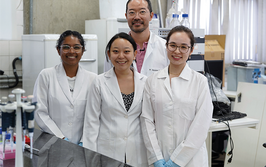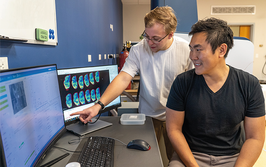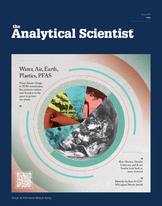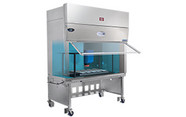This Week’s Mass Spec News
Henry Thomas | | 2 min read | News

Worth Your Time
Matrix-assisted laser desorption/ionization time-of-flight mass spectrometry paired with machine learning effectively distinguishes Plasmodium falciparum-infected human sera from non-infected samples, offering a promising tool for malaria diagnosis. Link
Researchers use headspace-gas chromatography-ion mobility spectrum and ultra-high performance liquid chromatography-tandem mass spectrometry to explore the impact of short-term weak static magnetic field stimulation on the metabolic profiles of fresh-cut young ginger. Link
Hao Chen and colleagues develop a direct and sensitive method to detect microplastics and nanoplastics in bottled water and apple juice via flame ionization mass spectrometry. Link
A six year study of patients with Alzheimer’s disease reveals the potential of blood-based amyloid biomarkers – quantified via immunoprecipitation–mass spectrometry – in guiding large-scale dementia screening in general populations. Link
Quantification and analysis of 230 histone proteoforms between metastatic (SW620) and nonmetastatic (SW480) colorectal cancer cells via capillary zone electrophoresis-tandem mass spectrometry. Link
The Analytical Scientist Presents:
Enjoying yourself? There's plenty more where that came from! Our weekly Mass Spec Newsletter brings you the most popular stories as they unfold, chosen by our fantastic Editorial team!
Essential Reading
Scalable Microfluidics Reveal Hidden Microbial Metabolite Interactions
Researchers at the Max Planck Institute for Plant Breeding Research have developed a scalable and modular fluidic system that enables dynamic, real-time investigation of metabolite-driven interactions between microbial species. The new system, MetaFlowTrain, overcomes previous limitations in studying microbial metabolic exchange by enabling continuous culture and compartmentalization of microbial communities.
The researchers validated the system using bacterial and fungal strains from the Arabidopsis root microbiome and observed that even in nutrient-poor peat extracts, continuous flow sustained microbial proliferation. Metabolite profiling using both targeted and untargeted mass spectrometry showed distinct exometabolite signatures between strains, with 37.2 percent of variation in untargeted metabolite profiles and nearly 50 percent in targeted profiles attributable to strain identity.
“The staggering diversity of molecules produced by microbes is a result of millions of years of evolution,” commented Stéphane Hacquard, lead author of the study, in a recent press release… Read more!
(Mass) Spectacular and Strange
“Snakes? Why’d It Have To Be Snakes?”
Like a certain whip-wielding archaeologist, I for one have never been the biggest fan of snakes. However, I’m sure even the ophiophiles among us would be pleased to hear that a new version of a serum used to treat envenomation by snakes of the genus Bothrops has been developed by researchers from the Butantan Institute and UNIFESP – and is three times more effective than the original.
The team performed liquid LC-MS/MS to detail the original serum’s protein composition, revealing that only a quarter of proteins in the standard formulation interacted with the venom – the rest deemed biologically irrelevant or potentially harmful. Affinity purification and reanalysis led the team to create a leaner, more targeted serum with significantly reduced filler proteins.
“We combined classical techniques with the most modern ones to quantify and increase the proteins that neutralize the venom, as well as reducing other molecules that can cause side effects. As a result, we obtained a serum with increased action even in smaller quantities,” summed up Alexandre Tashima, coordinator of the study, in the team’s press release.
Deputy Editor of The Analytical Scientist

















